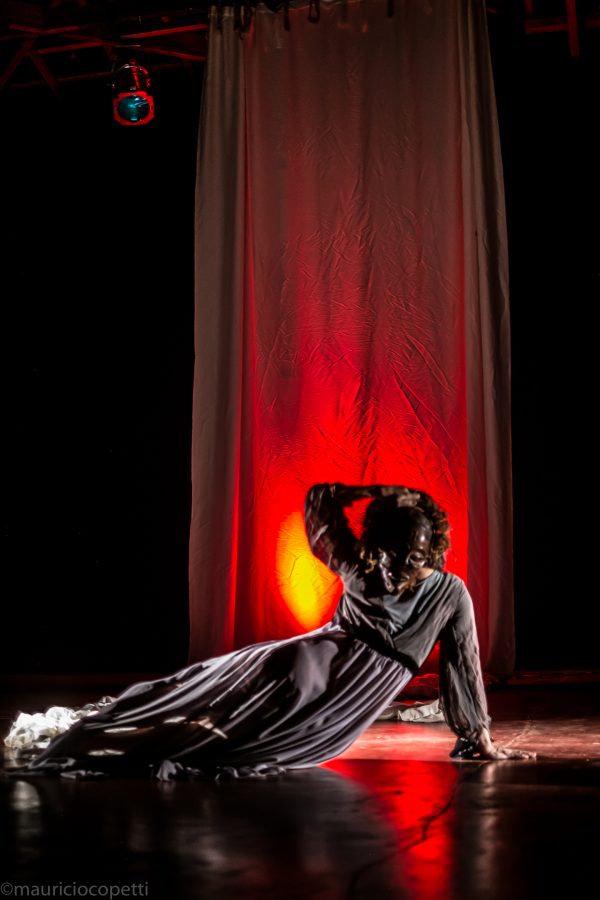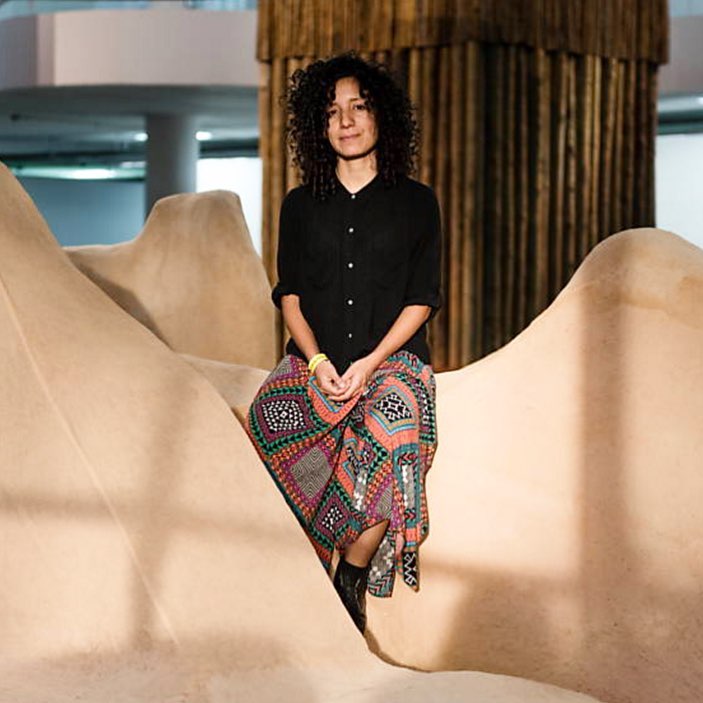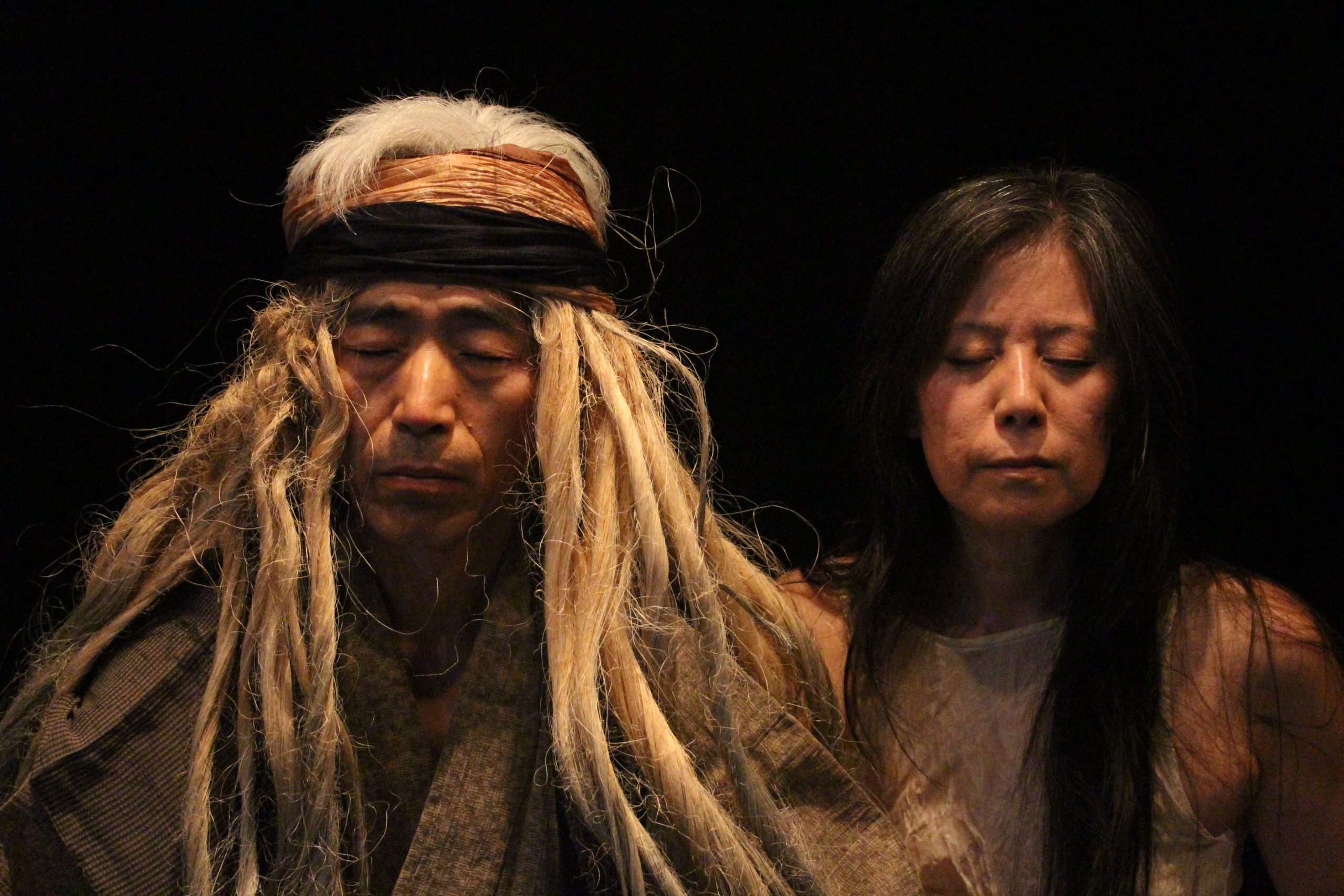
Pés na Lua – Sergio Medeiros
Sérgio Medeiros
Noite. Lua cheia. Uma lagoa. Eis o cenário. Mas não é tão simples como parece.
A lua, refletida na água, é também a lagoa.
Porém, a lua não está contida nessa lagoa: o luar transborda e invade o caminho que circunda a lagoa.
Lua, lagoa, caminho se confundem.
O caminho é parte da lagoa. Assim, quem percorre esse caminho percorre a lagoa e a lua nela refletida. E se duplica, multiplica.
Isso é o butô.
* * *
Nesse cenário, os pés estão na lua. Que é múltipla: lagoa, caminho.
* * *
Quem dança butô na lua se multiplica na lagoa e no caminho.
* * *
Esse cenário é ocidental e oriental.
Ocidental, porque é inconfundivelmente brasileiro. Ouvem-se os sons do Brasil nessa lua não silenciosa. É uma lagoa.
Oriental, porque nessa lua um animal mágico pila arroz ou as sementes da imortalidade. Ele não para de moer sementes a noite inteira. Num pilão.
* * *
Certa vez, num outono já longínquo, um poeta japonês pôs os pés nessa lua, nessa lagoa, enquanto caminhava ao seu redor.
Uma, duas, várias vezes.
(Poesia inseparável da lua, da lagoa e do caminho.)
Ele registrou essa experiência num haiku, poema breve.
Em japonês, o texto de Bashô diz:
meigetsu ya / ike wo megurite / yo mo sugara
Uma tradução possível (literal?) seria:
“lua cheia
rodeando o lagoa
a noite inteira”
* * *
Agora, nesse mesmo cenário, feito de lua-lagoa-caminho, o butô “vaga”. “Paira”. Ou, simplesmente, “para”.
Expectativa na lua, na lagoa, no caminho.
* * *
Um anfíbio. Inclina-se no brejo.
Um tempo, um corpo. Dois ritmos.
Braços atrás: asas nas costas curvas.
Braços para baixo, como pernas de aranha.
O reflexo do macaco.
* * *
Eis o princípio do butô “da lua”, lunaris.
* * *
Os cabelos longos são uma máscara, entre outras máscaras, outras faces.
Máscaras e roupas. Entra-se nelas. Sai-se delas.
* * *
O múltiplo butô passeia ao luar.
É mosca e mosquito.
(Bem depois, também pessoa, ancião, guerreiro, menino.)
* * *
O corpo se levanta, a sombrinha o escora, ergue-o.
O cabo longo se firma diante do rosto sem face fixa.
Então o cabo desliza na lagoa como um remo.
Ou se ergue como um pé de pássaro. Garça ou grou.
* * *
O corpo, ereto ou curvo, salta numa vitória-régia. Num camalote.
Os pés afundam na lama e avançam na massa viscosa.
* * *
Entre o burburinho dos insetos, uma música seca e outra úmida, suada.
Pilão moendo sementes mágicas.
A batucada tamborila como chuva na folhagem.
* * *
O cabo longo da sombrinha é uma arma: o caçador, o índio enfrenta um animal secreto, um dragão ocidental e oriental.
Uma serpente serpenteia: o caçador é a própria caça, ele mesmo é o dragão.
* * *
O butô toma posse da lagoa e da lua: o cabo da sua sombrinha é o mastro da bandeira.
O butô é o pescador, mas não avança na água parada. O butô vai para os lados e para trás, segurando o longo remo.
* * *
A sombrinha fechada é uma tocha com um fogo claro crepitando.
O fogo se aviva, a sombrinha se abre.
* * *
O corpo que se deita ao lado do cabo da sombrinha quer despir-se como ele.
Ambos nus.
A sombrinha aberta é abrigo, roupa: cobre, esconde, tanto quanto expõe.
* * *
O cabo da sombrinha é um balanço.
Nele o corpo se balança na lua.
* * *
A sombrinha fechada é fruta tropical que murcha, mas é sumarenta quando se abre.
* * *
A roupa é uma tenda. Com mangas amplas.
* * *
O corpo cai sem tropeçar. Pedra. A lua é rasa.
Então o butô ressurge, como se subisse do fundo de um poço.
* * *
O cabo da sombrinha é o cajado do ancião.
O cabo da sombrinha é uma planta sendo arrancada do chão.
Mãos de índio. Mãos de samurai abrindo caminho.
A sombrinha soca o chão como se socasse sementes mágicas no pilão.
* * *
Máscaras.
No ar.
Esvoaçando como besouros.
Face negra.
* * *
Em meio aos sons em volta da lagoa, a sombrinha é uma vassoura lançando tudo para trás: máscaras, panos…
* * *
O cabo da sombrinha é um bambu.
Um animal escala o bambu, que é também um raio.
* * *
O cabo da sombrinha é corda bem esticada, onde um corpo humano se agarra. Para elevar-se.
* * *
Como uma rede, a sombrinha sonda o ar, aprisionando insetos ou peixes, ou a lua prestes a sumir.
Amanhece?
Talvez sim.
* * *
O butô povoa a lua, povoa a lagoa, povoa o caminho.
O corpo não se aparta da lua, não se aparta da lagoa, não se aparta do caminho.
A dança busca a lua na lagoa que o caminho contorna.
Já amanhece?
Talvez.
* * *
O butô tem os pés na lua.
* * *
E na lua há um caminho que circunda uma lagoa.
Sob uma sombrinha ou nela apoiado como num cajado que também é planta, remo, pilão, corda… e muito mais, o butô amanhece.
O sol é outra história.
Sérgio Medeiros
Poeta
Professor de literatura na Universidade Federal de Santa Catarina
criador do site ecopoesia.com
FEET ON THE MOON
Sérgio Medeiros
Night. A full moon. A lake. This is the scenario. But it’s not as simple as it appears.
The Moon, reflected in the water, is also the lake.
However, the moon is not contained in this lake: the moonlight overflows and invades the path leading around the lake.
Moon, lake and path are mixed up.
The path is a part of the lake. Thus, the wanderer on this path travels the lake and the moon reflected in it. And duplicates and multiplies himself.
This is the butoh.
* * *
In this scenario the feet are on the moon. Which is multiple: lake, path.
* * *
Who dances butoh on the moon, multiplies in the lake and on the path.
* * *
The scenario is occidental and oriental.
Occidental because it is unmistakably Brazilian. The sounds of Brazil are being heard on this unsilent moon. It’s a lake.
Oriental because on this moon there’s a magic animal grinding rice or the seeds of life. It keeps on grinding seeds all night long. In a mortar.
* * *
Once, in an autumn long gone, a Japanese poet put his feet on this moon, on this lake, while walking around it.
Once, twice, many times.
(Poetry inseparable from the moon, the lake and the path.)
He recorded this experience in a haiku, a short poem.
In Japanese Basho’s text reads:
Meigitsu ya / ike wo megurite / yo mo sugara
A possible (literal?) translation would be:
“full moon
going round the lake
all night long”
* * *
Now, in this same scenario made of moon-lake-path, the butoh dance “wanders”. “Floats”. Or simply “stops”. Expectations on the moon, on the lake, on the path.
* * *
An amphibian bows in the swamp.
One time, one body. Two rhythms.
Arms behind: wings on the curved back.
Arms hanging down, like spider legs.
The reflection of the ape.
* * *
Here is the beginning of the butoh “of the moon”, lunaris.
* * *
The long hair is a mask, among other masks, other faces.
Masks and clothes. You step into them. You step out of them.
* * *
The multiple butoh takes a walk in the moonlight.
It is fly and mosquito.
(And much later also person, old man, warrior, boy.)
* * *
The body rises, the umbrella supports it, straightens it.
The long shaft is being held in front of the face with no fixed traces.
Then the shaft glides over the lake like an oar.
Or straightens like the leg of a bird. Heron or crane.
* * *
The body, erect or curved, jumps onto a giant waterlily leaf.
The feet sink into the mud and advance through the viscous mass.
* * *
Enter the low buzz of insects, one music dry and the other wet, sweating. Mortar grinding magical seeds.
The batucada drumming like rain on the leaves.
* * *
The long shaft of the umbrella is a weapon: the hunter, the red Indian, confronts a secret animal, an occidental and oriental dragon.
A snake slithers: the hunter is the prey itself, he himself is the dragon.
* * *
The butoh takes possession of the lake and the moon: the shaft of its umbrella is the flagpole.
The butoh is the fisherman but doesn’t advance in the still waters. The butoh moves to the sides and back, holding the long oar.
* * *
The closed umbrella is a torch with a bright crackling flame.
The fire grows stronger, the umbrella opens.
* * *
The body that lies down beside the umbrella shaft wants to take its clothes off too.
Both of them naked.
The open Umbrella is shelter, clothes: it covers and hides as much as it exposes.
* * *
The shaft of the umbrella is a swaying movement.
In it the body balances on the moon.
* * *
The closed umbrella is a wilting tropical fruit but very juicy when it opens.
* * *
The clothes are a tent. With wide sleeves.
* * *
The body falls without stumbling. Stone. The moon is flat.
Then the butoh surges anew, like rising from the bottom of a well.
* * *
The shaft of the umbrella is the old man’s staff.
The shaft of the umbrella is a plant being torn from the ground.
Indian hands. Hands of a samurai clearing the way.
The shaft hits the ground as if it were grinding magical seeds in the mortar.
* * *
Masks.
In the air.
Buzzing around like bumble-bees.
Black face.
* * *
In the middle of the sounds around the lake, the umbrella is a broom sweeping everything away: masks, pieces of cloth…
* * *
The shaft of the umbrella is a bamboo.
An animal is climbing up the bamboo, which is also a bolt of lightning.
* * *
The shaft of the umbrella is a stretched rope clutched by a human body.
To lift itself.
* * *
Like a net, the umbrella probes the air, imprisoning insects or fishes, or the moon that is close to disappearing.
Is dawn coming?
Maybe yes.
* * *
The butoh populates the moon, populates the lake, populates the path.
The body does not detach itself from the moon, from the lake, from the path.
The dance seeks the moon in the lake with the path going around it.
Is dawn coming already?
Maybe.
* * *
The butoh has its feet on the moon.
* * *
And on the moon there’s a path leading around a lake. Under an umbrella or leaning on it like on staff that is also plant, oar, pestle, rope… and much more, the butoh is dawning. The sun is another story.
English version by Hans Berggren


